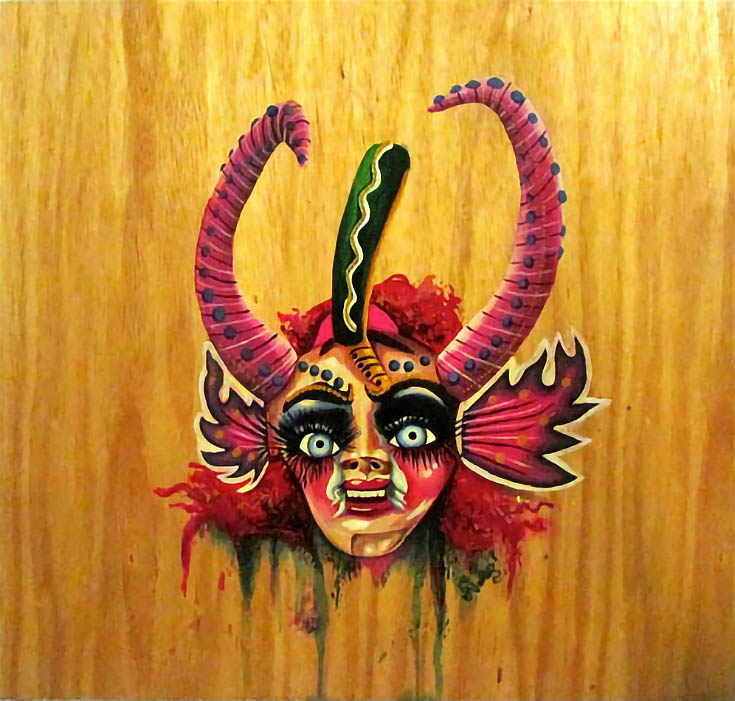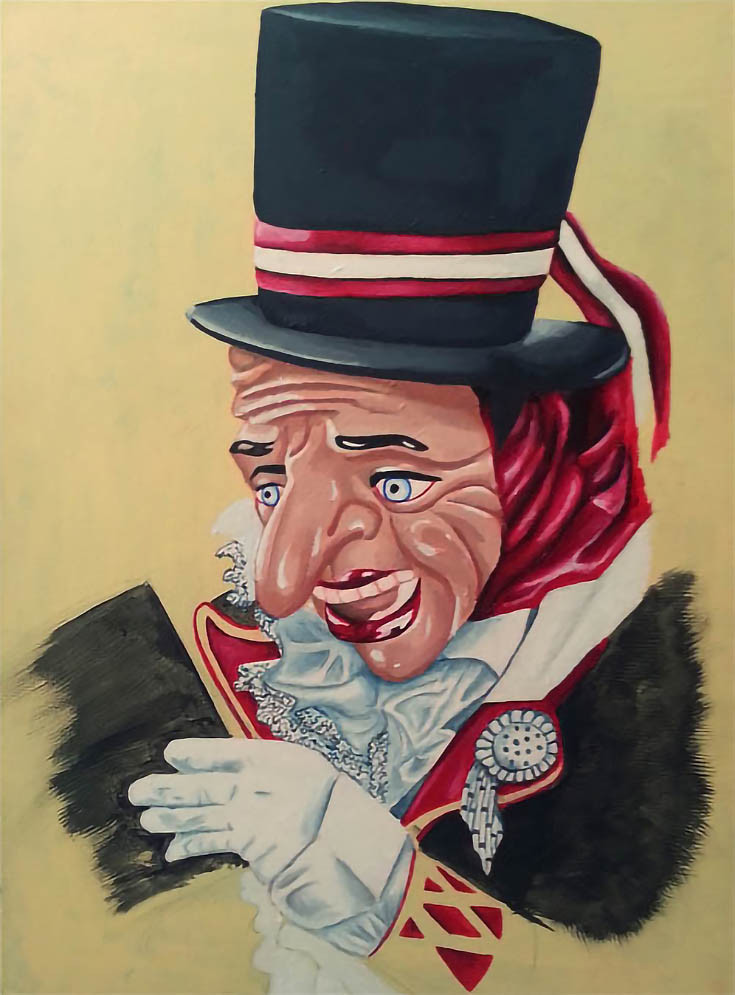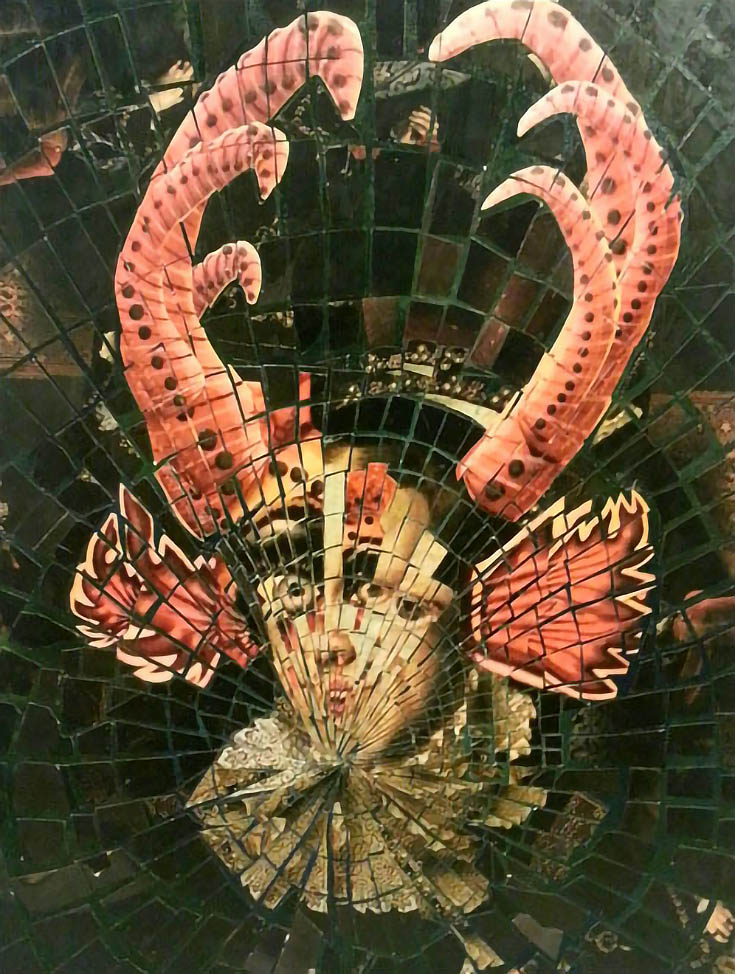Contemporary Bolivian/American artist Charlene Eckels aims to promote Bolivian social and cultural heritage through her work. Although currently studying at UNC Wilmington, Charlene has had her fair share of overseas adventure—she’s lived and studied at the national art school in Bolivia, taught art for orphans there, and has even survived an airplane crash in the Amazon jungle!
Charlene has traveled near and far, from London, England to Bahrain and Ireland, but has a special place in her heart for Bolivia, which she calls a hidden treasure of South America.
“Some of my artwork is a visual representation of how Bolivians express themselves in dance by using masks of the devil,” Charlene said. (Read more about what she has to say about Bolivia’s history at the end of the article.)
Below is one of Charlene’s rather frightening masks of the devil. The mask depicts ribbed, lethal-looking red horns that menacingly twist and coil.
Wide eyes rimmed with long, black lashes follow your every move, and serpent-like tongues act as ears as they strain open to listen to anything and everything. In the background, crimson plumes and droplets like blood curl and drip downward. Jagged teeth and flared nostrils complete the wicked look of the mask.
This next painting is slightly different. A formal top hat rests askew atop the figure below (who, with his red, white and blue ribbon and apparel, oddly resembles Uncle Sam—at least to me!)
His pale, icy blue eyes, medallion and scarf mimic a potentially cold, impersonal and false personality. Crimson lips and hair take on a waxy appearance as he grimaces eternally, seemingly frozen in time while everything around him corrodes and is swept away by some unknown breeze or magnetism.
Lastly, the figure below is duplicated in several pieces of broken glass, reminding me of a fun house at a carnival that has several mirrors arranged in an unnerving maze. Horns reach up as if they are attempting to claw their way out of this house of horrors—to no avail by the looks of the wide-eyed, likely crazed figure.
The mirrors distort its body, making it appear even more gruesome and terrifying. Everywhere in the background, I see hands clutching at themselves, as if they are nervously trapped in this room with this beast of a man.
Again we see those serpent-like ears, splaying out around the figure’s body like fire that’s been fed oxygen and flickers furiously and uncontrollably. It almost appears as if this figure is falling feet first down Alice in Wonderland’s rabbit hole as dark shadows surround it and suck away all light from the room.
And of course, these are just three of Charlene’s fascinating pieces. . . if you’d like to see more of her work or learn more about her Bolivian heritage, head on over to her website now!
HISTORICAL NOTE: In the 15th century when conquistadors invaded, Bolivians were forced to work as slaves in mines. Conquistadors also brought with them religion. As Bolivians pagan beliefs meshed with Spanish ideologies, they created a dance to honor their new found savior, the Virgin, yet their costumes are made with elaborate masks of the devil to appease him. El Tio (the devil) is ruler/owner of the mines, so they take great care to trick him, yet honor the Virgin, since she is their light of hope in such a dark place.
This post may contain affiliate links.



